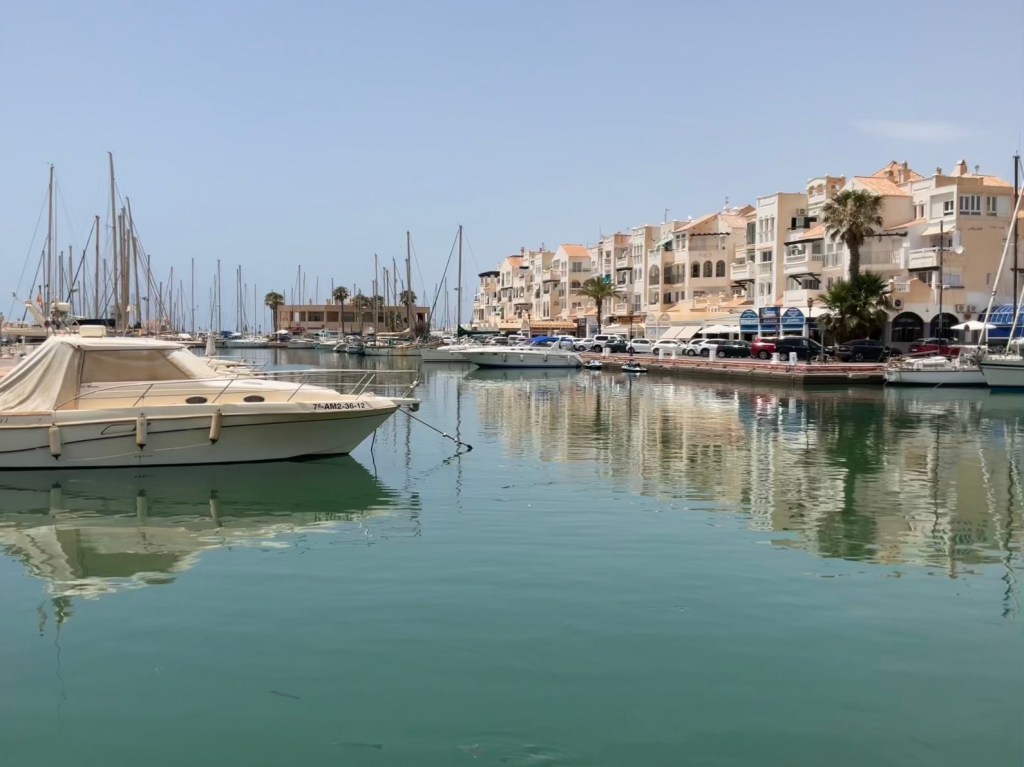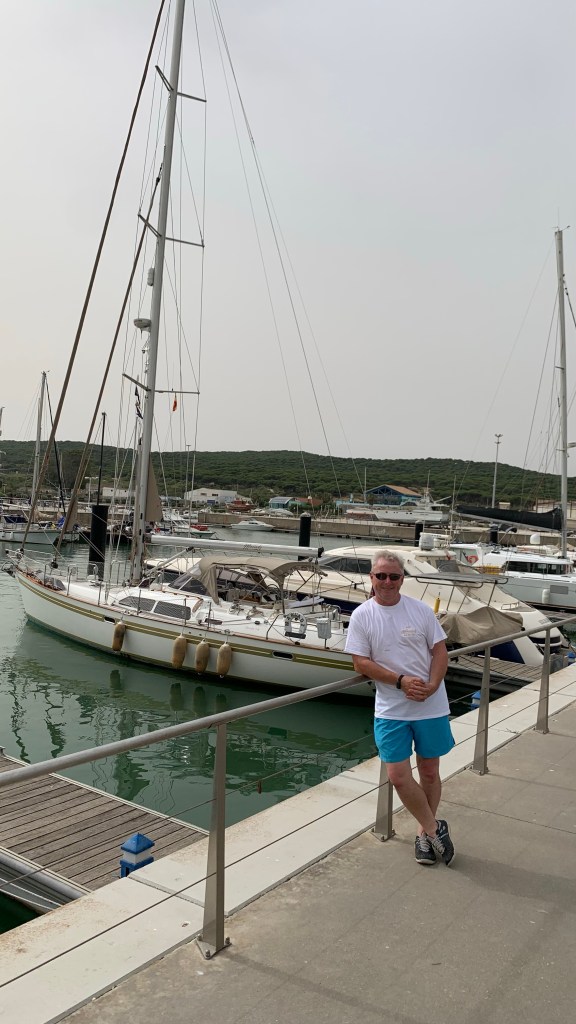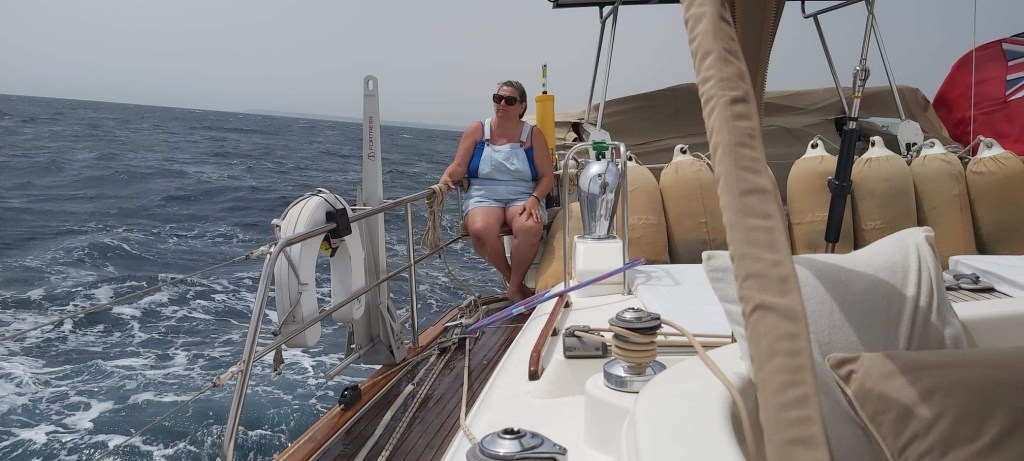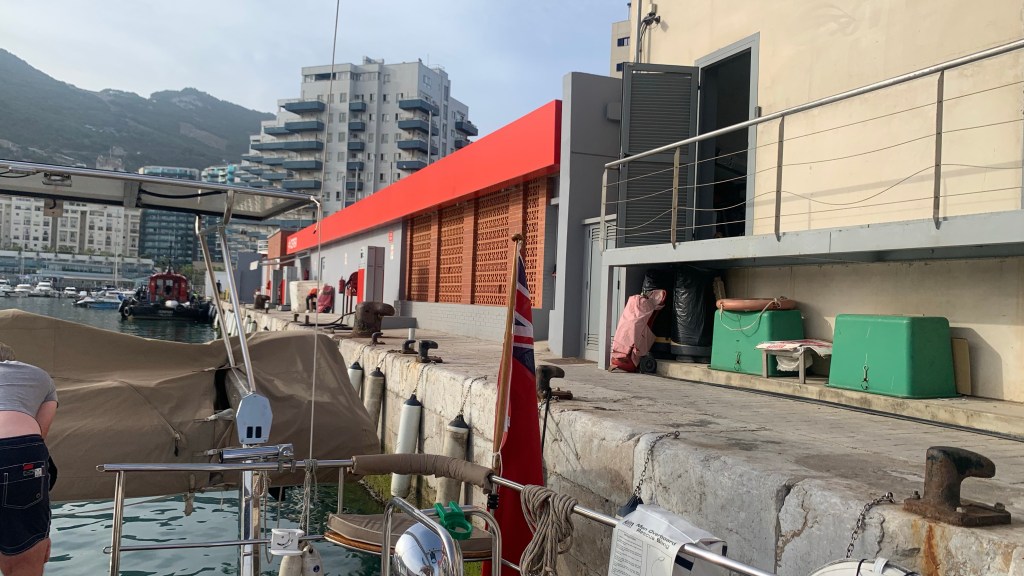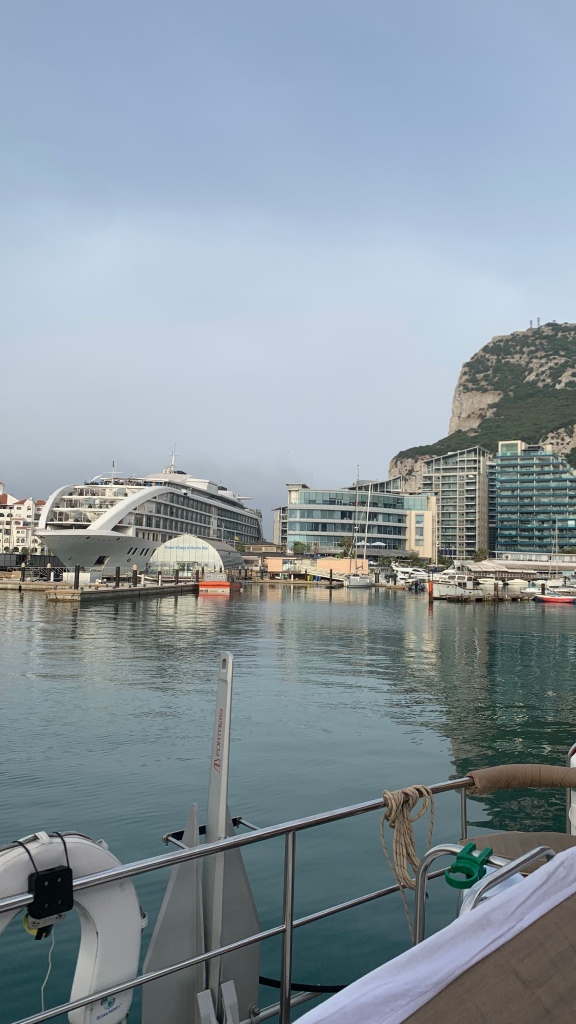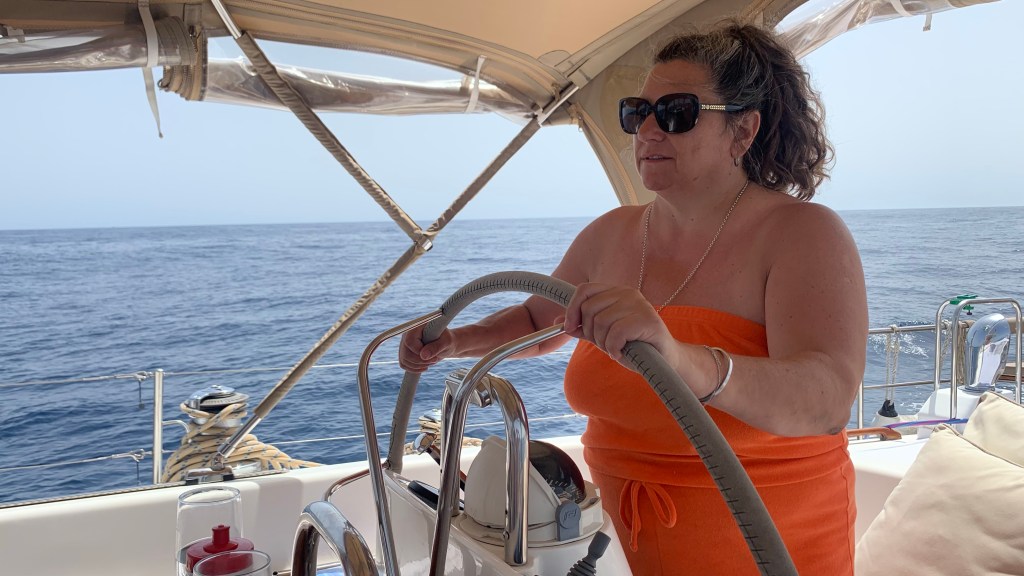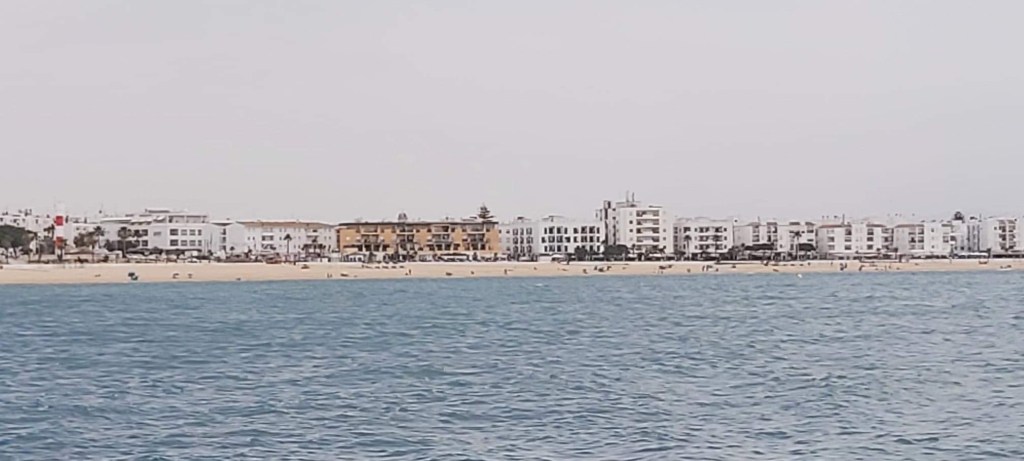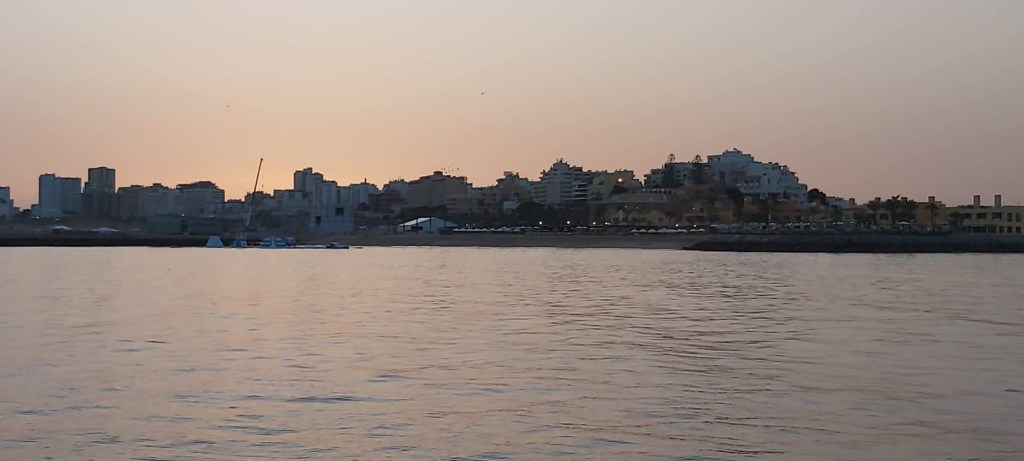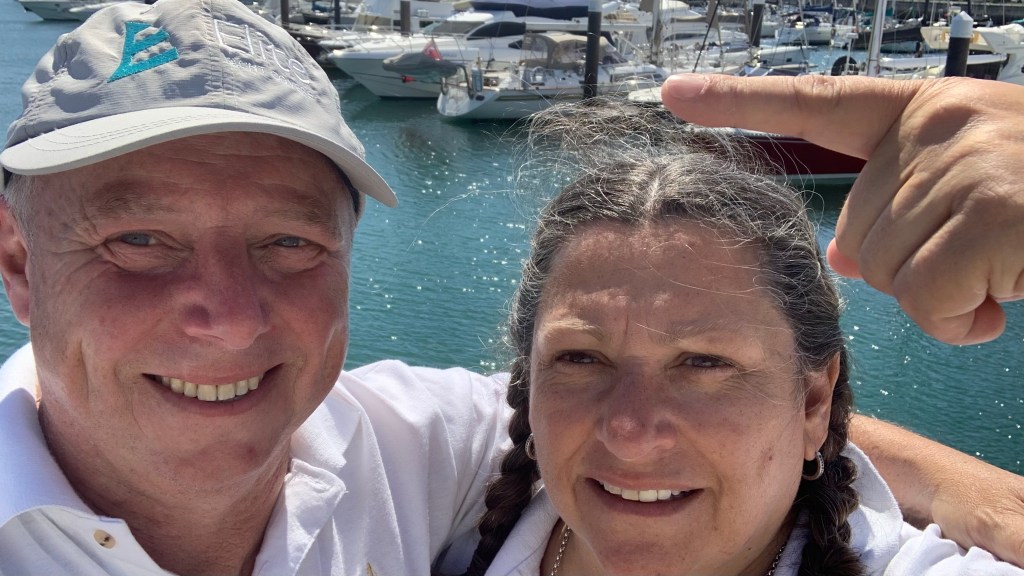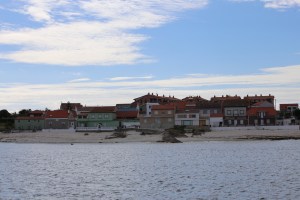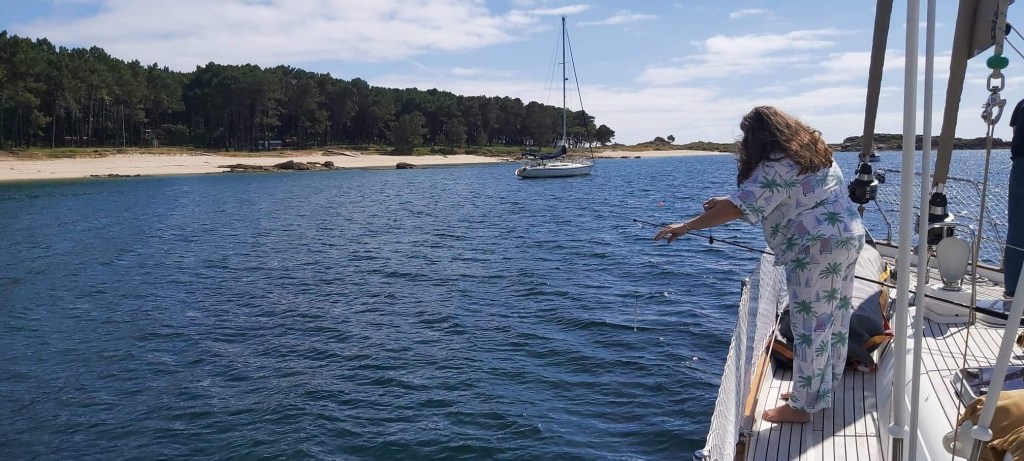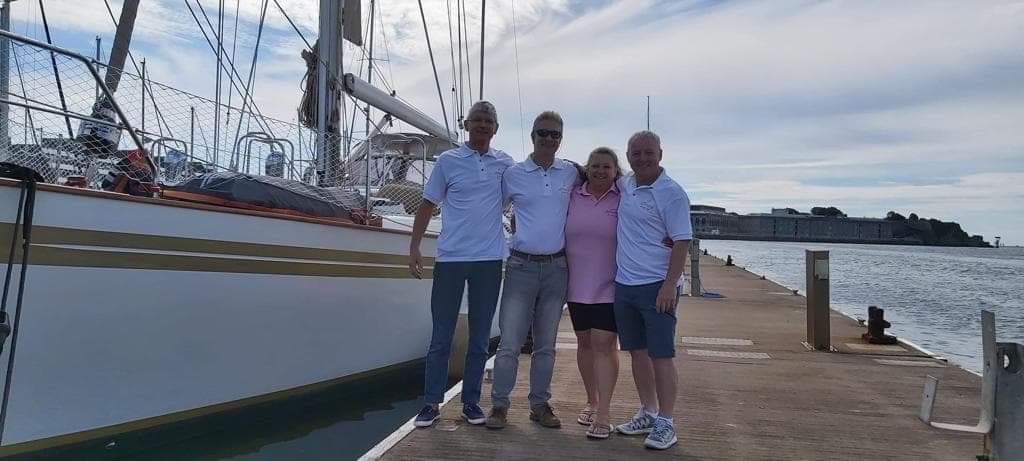We have stayed an unexpected night in Gibraltar when the fuel man left work having said he would wait for us. He must have had something important on but to be fair, it gave us a night off the boat to see Gibraltar and sets us up for the last journey to Almerimar and reasonably simple day and night cruise east.
We want to be ready early so we can get fuel and get going but just before they open another boat sneaks onto the fuel area in front of us. Hmm, if we want here for it to be clear, we may be here a while. We agree to go over and get Mariadz onto the front part of the fuel area which is tricky meandering between various boats and sneaking in front of the large catamaran before getting in and tying off. Fuel here is about £1.20 which is more than we used to pay in England but in the current situation is very cheap. We take more than 500litres filling up a few spare cans on top of the main tank of 670L. Soon enough we are ready to go.
It is back to the slalom course avoiding the anchored and moving ships outside Gibraltar but this time we will be heading east rather than being on the opposite side when we came in. Since we are no longer rushing to be in time for an already departed fuel man, we can take a look at our surroundings and admire the rock itself, I guess it is also the start of a day rather than the end of a stressful one too.
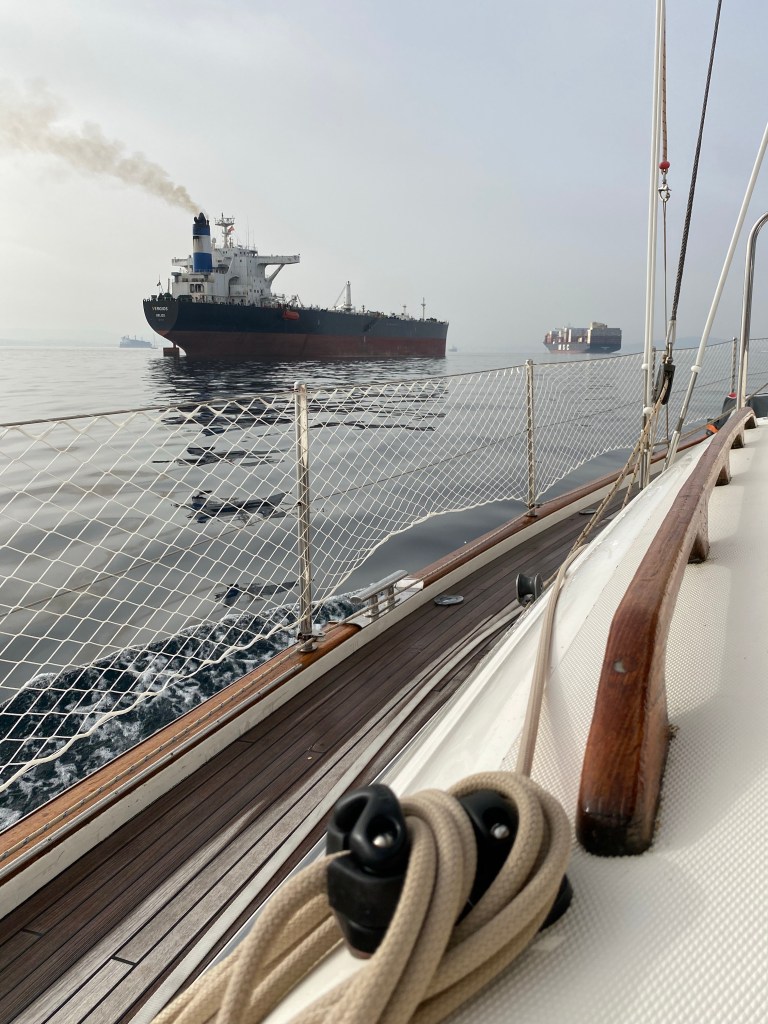
We get to the bottom of the bay and are at Europa point and now it is a single turn towards Almerimar a little north of due east. We can now settle into our standard watch patterns of two hours each as we look at an arrival time of early morning the next day.
It’s a quiet morning as we all just settle into the routine that has become our sailing lives. We are always looking at how we can get the sails out but as a delivery trip we don’t have the luxury of time so the engine is on and we are making sure we are making good progress.
It’s around lunchtime when I am idly scanning the horizon and see something strange. We are seventeen miles out and I can see a lone canoeist paddling away. Our first thought is that if he is trying to get from Africa to Spain, there are shorter journeys! One of the crew suggests that he is paddling and therefore ok but he is probably nineteen miles away from the nearest land on a scorching hot day. We are investigating and if he says he is fine then great.
He is now waving to us as well as paddling so we are Co fire t we have done the right thing. As we approach, we can see that his canoe is well fitted with a small outboard and safety gear but it becomes apparent no radio.
Before we hear his story I call tarife, who control this part of the sea, and explain what we have found. Interestingly, a few things go through your mind here. There is no imminent threat to life because he was stable in his canoe and he has now transferred to us so it isn’t a mayday. It may not even be an urgency message or Pan Pan since actually I may just be asked to take him to the nearest marina. So I decide to treat it as a routine message and ask Tarife for their advice and instruction. They are grateful that we have acted and say that they will send out a search and rescue boat to pick him up. By this stage, we have him on board, his canoe is tied off and being towed behind mariadz and we have offered him refreshment while Ex-nurse Maria has got her beady eye on him looking for signs of any issues. The lifeboat will be here in about 30 mins so we settle down, Mariadz going round in circles again.
Pedro, is from Madrid, and he comes down to the coast to explore it in his canoe. The previous night the strong winds had capsized his canoe flooding the engine with water and water logging his phone. He then got swept out to see. He had some water and chocolate but didn’t expect to be out for long so didn’t have lots of provisions. He had been trying to signal to various ships during the night by flashing SOS on his torch but no-one had seen him. It was very distressing for him and he said he felt that we were probably his last chance. To be fair there was another yacht behind us who may have seen him and may have been able to help but it was a powerful message of just how quickly it can go wrong and you can be in real trouble.
Fifteen minutes later and we get another call on the radio from tarife. The search and rescue boat will be with us in 35 minutes and they are on their way. We check AIS to see if we can see them since they should be in range. Eventually we find them coming along at 22 knots.
Pedro is in good spirits, more worried about the dirt he is leaving on our deck than his own well being. The life boat has arrived and we straighten our course so that they can come alongside. One of the crew has been asked to be a roving fender since, although we have set up fenders on both sides, it is difficult with two moving boats to get it right this close together. Actually, this didn’t work out very well for us, since he was so focused on filming what was happening that he forgot his fender duty and the lifeboat struck us reasonably gently right where he stood with his fender in his hand.
As soon as the lifeboat is alongside, Pedro is away and on board. We are not sure what we said but he seemed to be very happy to see his compatriots. Maria takes our line off mariadz and hands it to them so they can get the canoe on board and then they are ready to go. With our line. Pedro points out that the line isn’t his and asks for them to return it for us so they back next to us wanting to throw a line with a metal shackle at us. Instead I reach over with the boat hook and they place it on there and we get it in quickly.

An hour later, it is all done and we are back on our way towards Almerimar knowing that we have done the right thing. Tarife have been on the radio thanking us for our actions and all is good with the world. We gave our contact details to Pedro and hope he will write to us to say he is ok and back on the water having bought a waterproof VHF radio so he can contact help if he needs it.
The rest of the day is a little anticlimactic if we are honest. We are travelling in light winds putting sails up as we can and motor sailing. As the day draws in, a large dark rib is approaching us at speed. It is the Douane, or Spanish customs. We could see them moving and then divert at speed towards us. They take quite a long look while they are checking our details and then with a cheery wave before hammering off to another AIS track further out to sea.

The night watch starts, and one thing I have noticed is that despite everyone having six hours on and six hours off, it is rare that Maria and I are in bed at the same time for more than an hour or so. Tonight is one of those occasions but I am woken a couple of hours earlier than my watch by the unmistakeable sound of our main flapping as Mariadz pitches forward and back clearly in a reasonable sea. So there is wind but we don’t seem to be taking advantage. I pop up top to check the situation and we have a stiff breeze behind us but our main is tight in so not benefiting from the wind. We are also doing about three knots which means rather than arriving early in the morning, we are now looking at late afternoon. Mariadz and I are not having that. Having heard that the reason the sail is not set properly is because they were worried about waking us, we agree to get it done quietly but efficiently. The speed is back up and I can go back down for the last parts of my sleep.
I am up for my watch at 6am and can see we have a real opportunity with the wind to catch up some time. Overnight it has come round from a gentle south westerly to a good 15-20 knots further to the south and heading south east. This will make it a bit tight for us but I will take advantage of the wind we have to pick up some speed. The sails are up and set right and we are now whizzing along at a cracking pace and back on track to arrive in a few hours time. At 9am we arrive at Almerimar and are guided to our berth for the next fortnight which is stern to using lazy lines. Maria and I have experience with lazy lines from our sailing holidays in Greece but never on Mariadz so this should be interesting. Despite Maria’s concerns, she brings her in beautifully. The stern lines are on, the boys go to the bow with the lazy lines, which are really messy and tie them as tightly was they can. We can then tighten the stern lines up even more and Mariadz isn’t moving.
We now have the minor detail of how we get off the boat. Mariadz has a nice wooden and metal passarelle which folds in two and is deployed off the stern using the pasarelle line. Of course since acquiring her we have fitted a funky solar array above the rib which is where that pasarelle line would go. Fortunately we had considered this while we were stopped over in Vigo and had spent a some time setting up the pasarelle in a variety of ways to see how it was done. This has helped a lot and, after taking down the rib and moving it out of the way, we set upon creating an exit we can use to get off the boat. The biggest problem is that we have to empty the entire lazarette to get the pasarelle out! That will all need reloading too but needed to be done anyway so that we can sort out the Whitlock autohelm problem we had in Biscay.
Once we can step off the boat we can add extra mid lines to help make mariadz more stable with the strong winds that are coming.
We have now completed the first part of our journey to Brindisi. Me and the boys will be going to the airport to catch our flights to different destinations. It has been great having crew, and we really like Richard and Gerald. After two weeks, I think we probably all need some time apart though 🙂
